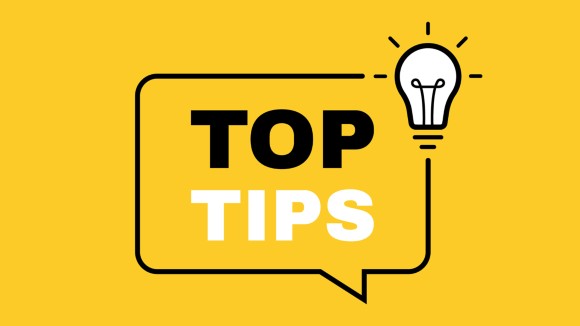Top tips for writing your brochure
Now we get to the fun part: writing your brochure. Here are some top tips for creating a brochure that will leave your competitors in the shade.

Decide on the perfect structure. As the backbone of your brochure, designing the structure should be a top priority. The front cover should be visually arresting with a strong title, company logo, subheading, and author, if appropriate. Include content on the first pages that make an immediate impact, encouraging the person to read on. Capture their imagination, tell a story, and keep hooking them in as they turn or scroll the page.
Choose a great topic. Brochures can be focused on product or service promotion and be used as powerful sales tools. Or they can be used to demonstrate thought leadership. If your brochure is about communicating the advantages of choosing your brand, you don’t need to worry about the topic, as the topic is you. If your brochure falls into the latter camp, you must pick a topic that will resonate with your audience.
Get inspiration by investigating some interesting research findings or trends in your sector that will grab your audience’s attention. Ask your sales team for ideas on challenges that are keeping your customers awake at night, or ask your customers themselves. How can you help them? What information and advice are they missing out on? What are the burning questions you need to answer?
Do something different. Get stuck into market research and find out what content your competitors are currently focusing on, then do something better. You won’t be able to reinvent the wheel every time, but you must create a brochure that stands out from the crowd. You can answer the same common questions (you want to be useful, relevant, and informative, after all) but put your unique spin on them. Add your own research, including interactive media, and bring your brochure to life with a compelling, engaging, and beautifully-crafted copy.
Speak your audience’s language. Half the battle with connecting with your audience is speaking their language. This means no unnecessary jargon and only using language they will relate to and make them feel understood. If you have very different audience groups, make different versions of the brochure to appeal to the interests and preferences of each. Brand style guides are a great way of keeping your language on point.
Keep it concise. Only use plain language, keep the superlatives to a minimum and get straight to the point. Remember, if you use a content creation platform with powerful analytics, you can see which copy is hitting the right notes or not and adjust the content and page structure accordingly.
Focus on the benefits. Try to keep the body text honed in on how your brand and products can make a difference to your customer. If your product is challenging to use for first-timers, don’t take up too much valuable page space on how-tos. Better to embed a video or link to an external guide.
Give them a reason to read on. The more content you can encourage your reader to consume, and the more time they spend with your brochure, the better chance you have to convince them that you are the right choice for them. Include prompts at strategic places in the copy and at the end of each section to show the benefits of staying engaged with the brochure. Mention topics you will discuss later on and why they matter.
Make it personal. Today’s customers want to feel valued by the brands they choose, and rightly so. Delivering personalized content is a big part of that. Adding pieces of copy or imagery that speak to their specific interests and solve their challenges can mean the difference between deterring a lead and converting them. If that sounds like a lot of work, it needn’t be.
Make it a pleasure to read. Overloading your reader with huge chunks of text is a surefire way of getting them running for the hills (or your competitor’s website). Keep sentences short and snappy, including plenty of page breaks, bullets, lists, quotation boxes, etc. Use the same font throughout (two at most) and opt for a font size of around 12 points or 16 pixels for the body text, larger for headlines but not too large.
Include a killer call to action. What do you want your reader to do once they have finished the brochure? Chances are it will be to get in touch, so make sure you give them a reason to do so. A free demo, for example, or a special offer. You could also consider adding in a CTA halfway through the brochure – “want to know our product could transform your business? Contact us today!”
Proof, proof, and proof again. Taking the time to polish and perfect the copy for your brochure is vital. Alongside the usual spelling and grammar checks, have it reviewed by colleagues or peers. Make sure it is easy to read, the running order makes sense, and all links and rich media work.